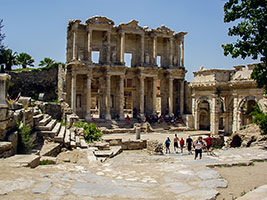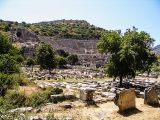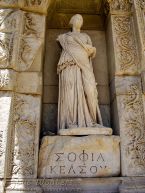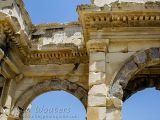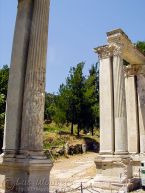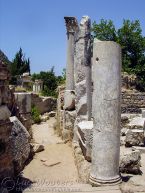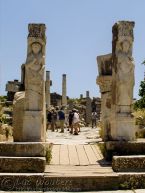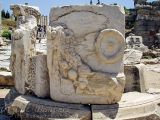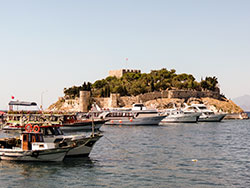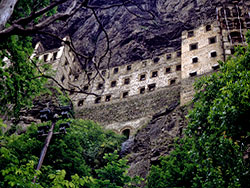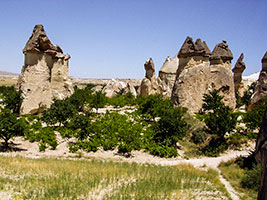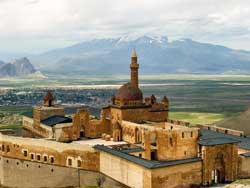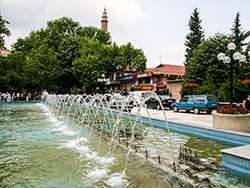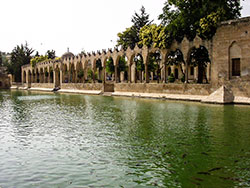Ephesus is surely the best-preserved classical metropolis of the world and its ruins bear witness to the greatness of the Greco-Roman civilization. The archaeological site of Ephesus is one of Turkey's major tourist attractions. In 2013, almost 3 million people visited Ephesus and the other historical places in the surroundings.
Historical Background
Ephesus was the capital of the Roman province Asia Minor and, at its heydays, it counted more than 50,000 inhabitants. Taking also the visiting traders, sailors, and pilgrims into account it must have been a vibrant city, second only to Rome itself. The city was famous for the Temple of Artemis (Artemision), the biggest temple on earth, four times larger than the Parthenon in Athens, and one of the Seven Wonders of the Ancient World. Unfortunately, this masterpiece was destroyed by the Goths in 262 CE. The ruins were later plundered by the locals and its marble stones used as a building material. Now only one sad column remains, which can be seen on the way to Selçuk.
Sights and Photos of Ephesus
Coming from Kuşadası by dolmuş, a visit to the ruins starts at the lower gate and proceeds to the well-preserved and overwhelming Grand Theatre. It is the largest and most impressive of the buildings in Ephesus. Originally, it was built in the Hellenistic Period under the rule of King Lysimachus, but it was altered and enlarged by the Romans in the reigns of Claudius, Nero, and Trajan. The impressive building measures 145 m in width and has a height of 30 m yielding a capacity of 24,000 spectators. St. Paul preached here in the theatre, but Demetrius, a jeweller, feared a drop in the sale of Artemis statues and started a demonstration against the apostle.
The other two highlights of a visit to Ephesus are, without a doubt, the Celsus Library and the Temple of Hadrian. The magnificent Celsus Library was built to honour the senator Tiberius Julius Celsus Polemaeanus, commonly known as Celsus, and it was completed after his death in 117 CE. The library was destroyed by fire during a Gothic invasion in the 3rd century CE. Subsequently, it was further plundered and locals used the precious marble as a building material. Then, in about 900 CE, also the façade collapsed by an earthquake. The library lay in ruins for centuries until it was reconstructed with the aid of the Austrian Archaeological Society between 1970 and 1978. In the reconstruction, missing fragments were replaced by copies, among which also the statues of the allegorical personifications of the Four Virtues, of which the originals are kept at the Kunsthistorisches Museum in Vienna.
The Temple of Hadrian is one of the most famous monuments of Ephesus. In 1956, the remains of the temple were found during excavations carried by the Austrian Archaeological Institute. The temple was in an excellent state of preservation and it was rebuilt in 1957-1958. Although some supplementary modern material had to be added, most of the building elements are original. Further conservation and restoration were carried out between 2012 and 2014. The photos that are shown here date from 2005.
https://turkeyphotoguide.com/ephesus#sigProIdb1bcdb241f

